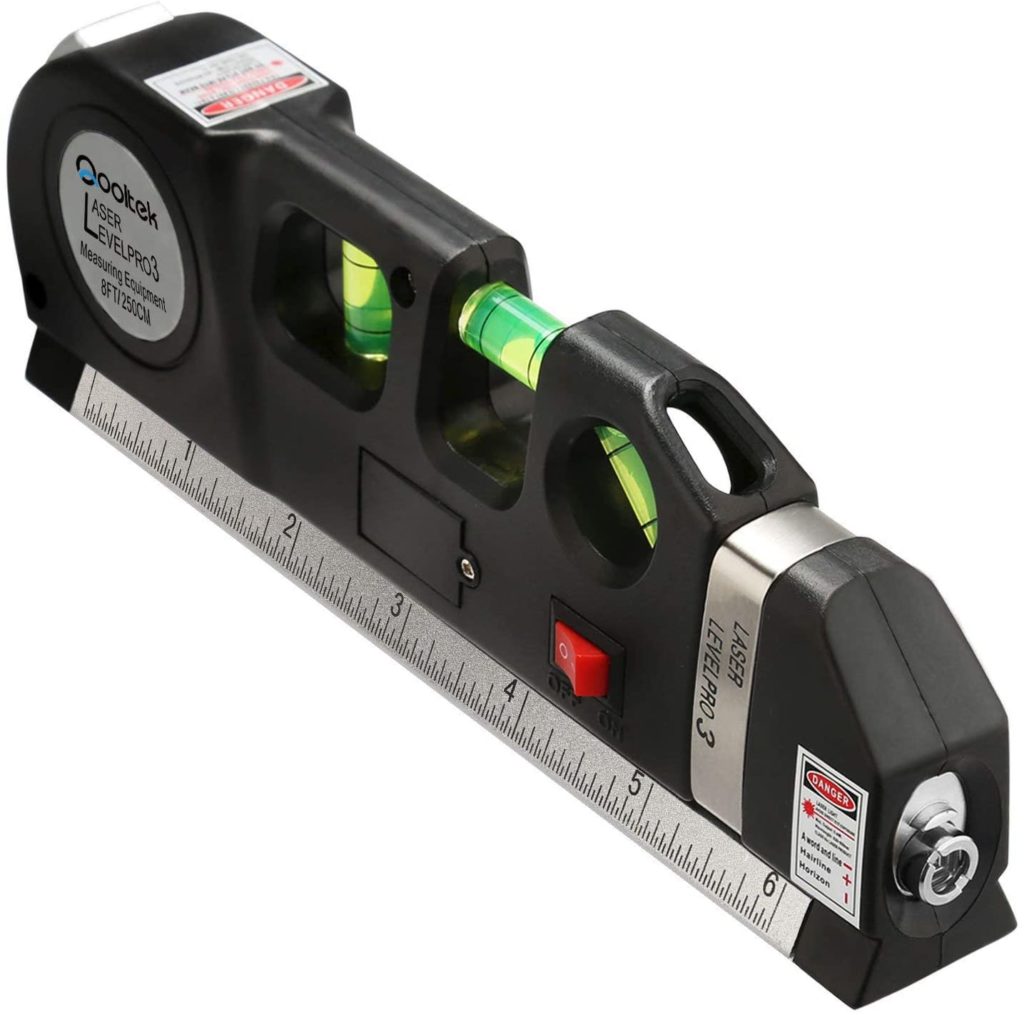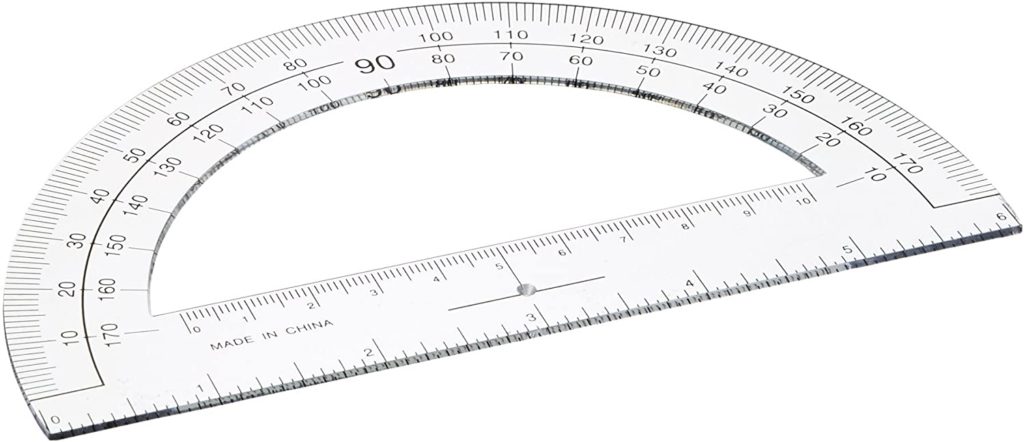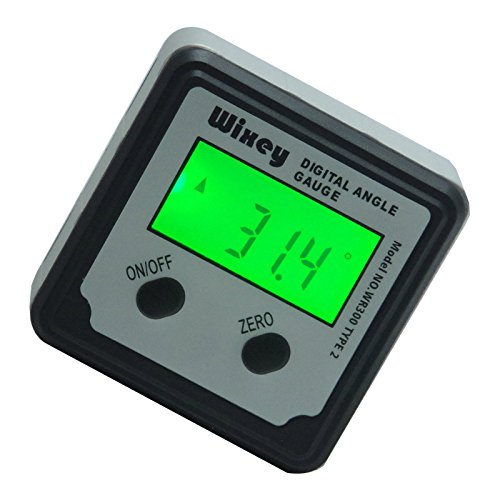14 Different Types of Measuring Tools and Their Uses (With Pictures)
-

- Last updated:


Tools that can provide accurate measurements are an essential element of any trade profession, from carpentry to plumbing to stonemasonry. More than that, measuring tools provide a surefire way to observe and record the world around us, so we can better pass on lessons to the next generation of students and professionals. To help familiarize yourself with this portion of the working world, we’ve put together a list of these types of measuring tools, complete with examples of their real-world uses. First, we’ll look at the different types of analog measuring tools and then examine the digital tools available.

The 14 Different Types of Measuring Tools
Analog Measuring Tools
1. Angle Locator
Also known as an angle finder, an angle locator features a magnetic base that can attach to metal measuring squares. Occasionally, you’ll also find models that include self-threading screws for use with nonmetallic measuring squares.
Allowing for easy measurements at a glance of angles from 0° to 90°, some angle locators also come with conversion guides that make them useful for identifying roof pitches, stair slopes, or drainage angles. While there are plenty of digital options for measuring angles, sometimes the assurance of an inexpensive all-weather tool wins out over pricier and more fickle technologies.
2. Bubble Inclinometer
Designed specifically for measuring the range of motion at a joint, the bubble inclinometer can also be used to measure the steepness of a grade. To identify the range of motion of a joint to be measured, simply place the inclinometer directly next to it, turn the dial until the scale reads 0, take the joint through its range, and read the range from the inclinometer.
The bubble inclinometer is often used by sports therapists to test for a healthy range of motion at the body’s crucial junctures. Over the course of treatment, this tool allows them to keep an objective record of the recovery process in cases of joint injuries.
3. Calipers
Available in analog or digital measuring versions, calipers are an indispensable tool for measuring the distance between two opposite sides of an object. By adjusting the tips of the calipers to fit across the object to be measured and removing the calipers, the total distance can be measured via an integrated ruler.
Utilized in a wide variety of fields, calipers can be found in the offices of mechanical engineers, scientists, and doctors, as well as in the field with metalworkers, woodworkers, and forestry researchers.
4. Compass
One of history’s most revered inventions, the compass was integral in kicking off the age of exploration in seafaring travel. Used for navigation and establishing orientation, it relies on the natural magnetic pull of the Earth to establish a relative direction for the user.
The compass is known as one of the “Four Great Inventions” of China (alongside gunpowder, papermaking, and printing) and was initially used as a tool for divination. Today, it’s still widely used by outdoor activity enthusiasts, military operations, and sailors.
5. Level
The level is used to establish “true horizontal” and is an optical instrument that uses air bubbles in a liquid medium to display its results. It’s especially useful on construction jobs and is also a standard inclusion in woodworking and metalworking shops.
6. Pressure Gauge
Pressure gauges are an exceptionally diverse field of measurement tools used to quantify everything from altitude to air pressure to depth to blood pressure. Hydrostatic and aneroid gauges are the most common styles of analog pressure gauges; the former has a delayed response but is great for sustained pressure, while the latter responds quickly but is less accurate overall.
7. Protractor
The protractor measures angles with a transparent plastic or glass half-circle and is usually marked with degrees. Occasionally, you’ll find more mathematically oriented protractors that measure in radians instead. They are a staple of the mechanical engineering profession but are also commonly employed in high school geometry classes.
8. Ruler
Rulers are sometimes known as a rule, line gauge, or straightedge and are used to measure distances or draw straight lines. Professionally, they are mostly found in engineering and construction jobs, where they are used to ensure accurate measurements on flat surfaces. As a popular tool to have around the house, rulers are perhaps the most common measuring tool in use today.
9. Measuring Squares
Also commonly referred to as a carpenter’s square, measuring squares resemble two rulers joined at a right angle. They’re available in a variety of specialized forms, and you may also find:
- Combination squares have interchangeable angled heads used in woodworking and stonemasonry to mark out angled cuts.
- Drywall squares are extra-large versions of the standard measuring square that are designed to allow long, accurate markings for drywall cuts.
- Framing squares are also known as steel squares. Widely used in carpentry to set up perfect right angles, the shorter side is known as the tongue, while the longer side is known as the blade.
- Speed squares improve on the classic carpenter’s square by combining the functions of a combination square and framing square into one tool. They are used for marking measurements on lumber, as well as being employed as a saw guide for short 45° or 90°
10. Tape Measure
Also known as a measuring tape, the tape measure can take measurements of size or distance. At their simplest, they consist of little more than a ribbon of cloth or plastic, marked with measurements in inches, centimeters, and millimeters. You’ll commonly find these minimalist tape measures used in tailoring and dressmaking.
Alternatively, the self-retracting metal tape measure utilizes a spring-loaded housing that can be clipped onto a belt. As a ubiquitous tool of the construction trades, the tape measures is especially useful for taking measurements over long distances—sometimes up to 100 feet!
Digital Measuring Tools
1. Angle Gauge
Since it’s faster, easier to use, and more accurate than an analog angle gauge, the digital angle gauge allows you to instantly find the angle of any surface you attach it to. Equipped with a powerful magnetic base and automatic calibration controls, these measuring tools are especially useful in determining precise bevel and miter angles on powered saws.
2. Laser Level
A laser level is a self-leveling tool that emits a colored laser beam and allows for easy visual confirmation of horizontal and vertical leveling. Some of the fancier models also include the capability of measuring the distance from the unit to the end of the laser beam, making them a fast and accurate solution for job site distance measurements.
3. Micrometer
The micrometer is essential for high-precision machining and resembles a caliper that screws down rather than sliding. Digital micrometers produce an instant readout on the distance between their two caliper heads, sometimes allowing for measurements accurate up to three or four decimal places.
4. Thermometer
As one of the most widely recognized measuring tools, thermometers provide a temperature reading, with digital thermometers providing faster and more reliable results. They are a staple of modern medicine but also find their way into the culinary arts and environmental studies quite regularly.
Conclusion
Whether you’re working in one of the construction professions or simply love getting involved with DIY projects at home, measuring tools will give you the precision and accuracy necessary to achieve great results on anything you set your mind to. So, the next time you want to complete a project, you’ll have multiple ways to take measurements to ensure your dimensions are true.
- Related Read: 10 Best Digital Calipers
Contents
















